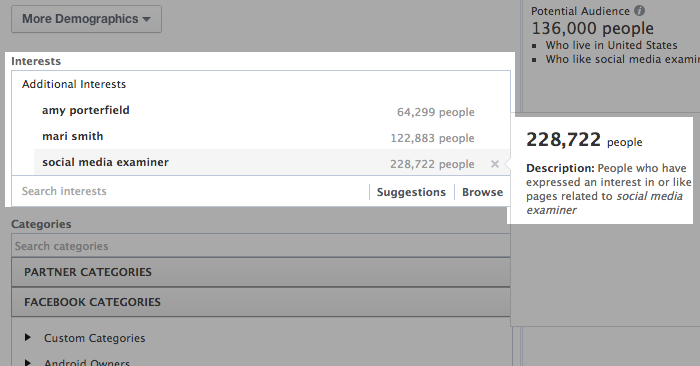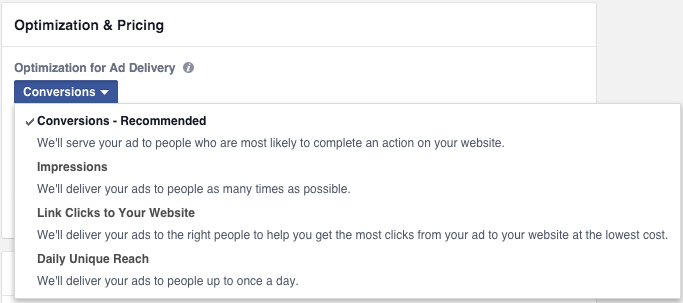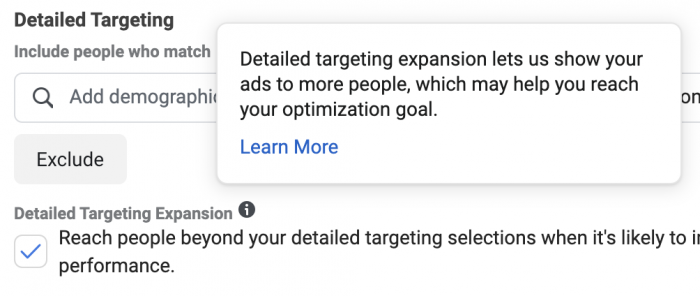While I was preparing my slides for Social Media Marketing World about the changes related to targeting and optimization over the years, it struck we why so many advertisers struggle with understanding how their role has evolved with targeting: There’s a messaging problem.
I know there’s a messaging problem because I was dealing with it myself while I was trying to communicate it. The processes of targeting and optimization are beginning to blend into one. I think I found the solution.
We need to shift our focus to who sees our ads.
Sometimes people see your ads because they were included in your targeting inputs. Sometimes it’s due to Meta’s optimization for delivery. Both have been important. But the importance of both are changing.
Targeting and optimization were previously very different things. Now they are converging.
Maybe this doesn’t make sense yet. But once it does, it will help you better understand the systems at play which determine who sees your ads — and your role in them.
How People Saw Your Ads Pre-Expansion
Previously, advertisers had a critical role when it came to who saw their ads. They provided the initial targeting inputs.

Facebook (before there was Meta) then optimized to show your ads to people within that initial audienceThis is the group of people who can potentially see your ads. You help influence this by adjusting age, gender, location, detailed targeting (interests and behaviors), custom audiences, and more. More who were most likely to perform your desired action. This was “Optimization for Ad Delivery.”

Both were critically important. But optimization couldn’t fix bad targeting. If you provided a flawed pool of people to work with, you would not get good results.
For years, I contended that targeting was the most important advertiser responsibility. It could make or break your advertising.
How People See Your Ads with Expansion
That started to change pretty dramatically once Meta introduced Detailed Targeting Expansion (which eventually became Advantage Detailed TargetingWhen turned on, Meta can expand your audience to reach people beyond the Detailed Targeting (interests and behaviors) that you selected, but only if that expansion is expected to lead to better results. Location, age, gender, and exclusions are hard constraints, and the expanded audience will continue to follow those rules. More).

Advantage LookalikeWhen turned on, Meta can expand your audience if it believes you can get better results by doing so. That expansion will be achieved by increasing the percentage of your lookalike audience, using the original custom audience for training. More and Advantage Custom AudienceWhen turned on, Meta has the ability to expand targeting beyond your selected custom audience. The location, age, gender, and exclusions that you input will continue to be used as hard constraints. More soon followed.
The advertiser provides the initial targeting inputs. Just as important, they indicate a performance goal.

In some cases, the advertiser has the option to turn expansion on. In others (like when optimizing for conversionsA conversion is counted whenever a website visitor performs an action that fires a standard event, custom event, or custom conversion. Examples of conversions include purchases, leads, content views, add to cart, and registrations. More), it’s on by default and can’t be turned off.

When on, your initial inputs will be prioritized. But if Meta believes that you can get better results (determined by your performance goalThe Performance Goal is chosen within the ad set and determines optimization and delivery. How you optimize impacts who sees your ad. Meta will show your ad to people most likely to perform your desired action. More) by expanding the audience, people who would not have qualified within your targeting inputs can see your ads.
The level of transparency is essentially zero. When viewing our results in Ads Manager, we have no idea how many of those results are from people we intended to target and how many came as a result of audience expansion.
How People See Your Ads with Advantage+ AudienceMeta's AI-powered targeting option. Meta will attempt to find your audience for you based on pixel activity, conversion history, and ad engagement. You can also provide targeting suggestions that Meta will initially prioritize before going broader. More
While the mechanics of Advantage+ Audience sound very similar to expansion via Advantage Detailed Targeting, Advantage Lookalike, and Advantage Custom Audience, there are some very important differences.
Any inputs you provide when using Advantage+ Audience are mere audience suggestions.

If you don’t provide any suggestions, Meta will start with your prior conversions, pixel data, and previous engagement with your ads. In other words, the targeting will prioritize remarketing without providing inputs.
Another difference from Advantage expansion is that after prioritizing that initial audience, it can go much broader. The focus will be showing your ads to people most likely to perform the action that you want (defined by the performance goal).
As is the case with Advantage expansion, there is no transparency regarding a breakdownBreakdown is a way to get insights into your ad performance related to time, delivery, action, or dynamic creative element. More of performance between your inputs and the algorithmically generated audience. But one can assume that a much larger percentage of those reached are found by the algorithm — especially since you don’t need to provide inputs at all.
How People See Your Ads with Advantage+ Shopping
Advantage+ Shopping Campaigns take this even further. The targeting inputs you can provide are virtually nonexistent. No interests, custom audiences, or lookalike audiences. You can restrict by country and set a current customer cap by defining your current customers in your ad account. But that’s it.

Otherwise, the people who will see your ads are determined via machine learning. All Advantage+ Shopping CampaignsThe campaign is the foundation of your Facebook ad. This is where you'll set an advertising objective, which defines what you want your ad to achieve. More utilize a conversions performance goal (either “most conversions” or “value of conversions“), and the conversion event will define which specific action determines success. This was previously locked in as Purchase, but you can now select any standard or custom event.

Who will see your ads? This is determined using machine learning based primarily on the conversion event.
The Performance Goal is Your Targeting Now
There’s a very good argument (okay, it’s my argument) that the performance goal is more important to who sees your ads than your actual targeting inputs. Especially now that your inputs are only suggestions with Advantage+ Audience and no inputs are provided with Advantage+ Shopping, it’s difficult to make the case that these inputs are as important as they once were.
But that doesn’t mean that you don’t have any role when it comes to determining who sees your ads. Even when you have no targeting inputs at all, like with Advantage+ Shopping Campaigns, there remains one very critical step.
Your performance goal is the targeting now.
If you want purchases, set a conversions performance gaol with Purchase as your conversion event.

If you want post engagementPost engagements include all of the actions that people took on your Facebook ad post. Examples include:
• Post Shares
• Post Reactions
• Post Saves
• Post Comment
• Page Likes
• Post Interactions
• 3-Seconds Video Plays
• Photo Views
• Link Clicks
More, set that as your performance goal. But don’t expect purchases.

This will automatically include some of the people you would normally target manually via remarketing audiences. The rest are filled in algorithmically based on the performance goal.
But here is something you need to understand. The audience won’t always be the same.
The people who see your ads when the performance goal is Conversions (with Purchase conversion event) will not be the same as the people who see your ads when your performance goal is Post Engagement. Your performance goal determines what you care about — and that is the central lever for determining how Meta optimizes and makes adjustments.
If your performance goal is for anything top of funnel (link clicksThe link click metric measures all clicks on links that drive users to properties on and off of Facebook. More, landing page viewsLanding Page View is a Facebook ads metric that represents when people land on your destination URL after clicking a link in your ad. More, Post Engagement, or ThruPlay), you are very likely to run into quality issues. The reason is that Meta doesn’t care whether these people do anything else — because the assumption is that you don’t either. So your ads will be shown to people most likely to perform that action, which could be because they click on everything or a placement often results in that action.
The Role of Ad Copy and Creative
It’s popular to say that targeting has moved to your ad copy and creative (I even said it). While what you do with the ad is absolutely important, I contend it remains secondary to the performance goal.
That’s not to diminish the importance of ad copy and creative. It may be splitting hairs to say that one is more important than the other.
If you pick the wrong performance goal, you’ll need the perfect ad copy and creative to get any results.
If you create a sub-par ad, the right performance goal can help get you some results.
In both cases, your potential is limited. You’ll get the best results by setting the appropriate performance goal and being on top of your game with ad copy and creative.
The Future of Who Sees Your Ads
If you’re following the trends outlined here, it shouldn’t be all that difficult to predict the future of targeting. The continued focuses on privacy, tracking, and malicious uses of targeting (discrimination and manipulation of elections) makes the continuation of this trend a near certainty.
You may argue that your inputs still mean a lot because you use the original targeting options and don’t always optimize for conversions. You regularly find ways to avoid audience expansion.
But do not expect these options to remain. Meta clearly wants advertisers to use Advantage+ Audience. It couldn’t be more obvious that the original methods are on the way out.

And we’ll very likely see the hands-off targeting approach of Advantage+ Shopping Campaigns expanded to other objectivesWhen you create a campaign, one of the first things you'll do is select an objective. The campaign objective is your ultimate goal. Your selection will impact options, including optimization and delivery. Options include Awareness, Traffic, Engagement, Leads, App Promotion, and Sales. More. Meta already hinted at this related to leads.
If you haven’t already started to shift from “targeting” to “people who see my ads,” it will be forced on you eventually. Might as well get used to it.
Your Turn
How do you see your role in who sees your ads?
Let me know in the comments below!





